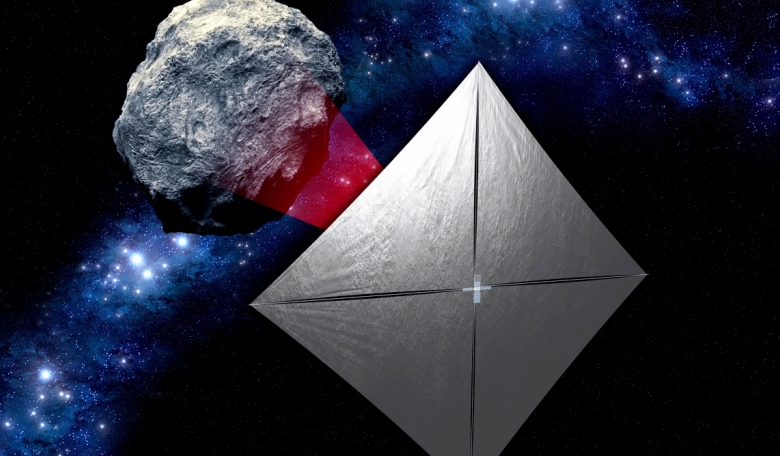A shoe box-sized CubeSat called NEA Scout will use a thin, aluminum-coated solar sail about the size of a tennis court to propel it towards the smallest asteroid ever to be studied by a spacecraft.
After the spacecraft launches aboard the Artemis I uncrewed test flight this spring, the sail will use solar radiation to propel the CubeSat to the asteroid, estimated to be ths size of a school bus.
The target is 2020 GE, a near-Earth asteroid (NEA) that is less than 18 m in size, and the spacecraft will use its science camera to get a closer look, measuring the object’s size, shape, rotation and surface properties while also looking for any dust and debris that might surround it.
Because the camera has a resolution of less than 10 cm per pixel, the mission’s science team anticipate being able to determine whether 2020 GE is solid – like a boulder – or if it’s composed of smaller rocks and dust clumped together like some of its larger asteroid cousins, such as asteroid Bennu.
“Thanks to the discoveries of NEAs by Earth-based observatories, several targets had been identified for NEA Scout, all within the five to 30 m size range,” said Julie Castillo-Rogez, the mission’s principal science investigator at JPL. “It is a chance to study a class of asteroid that we currently know very little about.”
The asteroid 2020 GE was first observed on 12 March 2020 by the University of Arizona’s Catalina Sky Survey as part of its search for near-Earth objects for NASA’s Planetary Defense Coordination Office.
NEA Scout is a science and technology demonstration mission based on a six-unit CubeSat and it will be one of 10 secondary payloads aboard NASA’s Space Launch System (SLS) rocket, currently scheduled for launch no earlier than March.
The mission will act as a nimble scout for future human and robotic missions that may utilise asteroid resources – and will gain important planetary defence insights about this class of NEA.
Solar sail mission will intercept and study small asteroid











